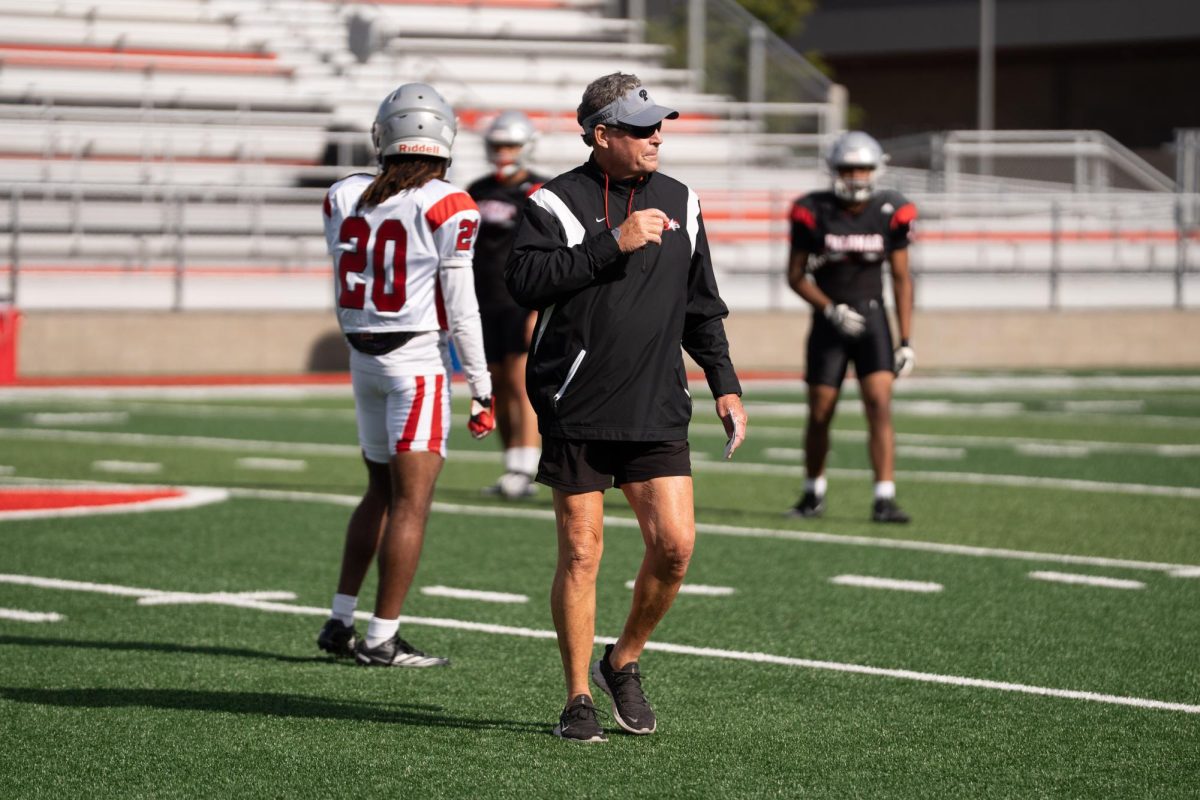When it comes to athletics at Palomar College, all sports are created equal. Presented with a zero-based budget, the athletic department uses money allocated to it at the beginning of each year to fund the most comprehensive intercollegiate athletic program of any community college in the state of California.
Palomar currently has 22 competitive sport teams, all of whom take from the same general allotment of funds that are provided to the athletic department. No one sport is given more money than another, instead each sport receives as much as they’ll need out of the general allotment provided to the department.
“Our budgets are based on items that we pay for to operate all of the sports collectively,” Palomar Athletic Director Scott Cathcart said. “We’re based on zero-based budgeting so we’re going to use every dollar we have.”
With zero-based budgeting the idea is to have a set amount of funding for a given period, with all justifiable expenses accounted for during that time. These expenses are analyzed, and an allotment of funds is decided upon based on those findings. The budget for each new year is usually around $330,000, with the money coming from district operational funds, an apportionment obtained from full-time student equivalencies.
The funding for the department is then divided into cost centers, with the majority of the funding going into what is called a general operations budget. This was $150,875 for the 2016-2017 school year, and includes among other things spending on travel equipment and officials for games. The Athletic Department is also given a budget for travel, post conference play, department supplies, projected gates income, equipment management, and sports medicine and training.
While these funds help out with many of the expenses related to the cost of athletics, they do not cover everything. Team fundraising is a common and effective way to fill in for the places where funds do not reach, with teams collectively raising around $200,000 a year.
“Our kids purchase their shoes, they purchase their undershirts, they purchase their hats, we fundraise to help pay for that stuff,” baseball Head Coach Buck Taylor said.
The money raised by fundraising goes into an account, which can then be accessed to make purchases to upgrade items such as equipment. Teams do not have entirely free reign to use these funds how they wish, as director Cathcart still must approve any purchase.
“I want to look at that thing and make sure that they’re buying stuff that’s red, I’m not going to sign off if they all of a sudden decide they are going to buy blue hats,” Cathcart said. “Or if the coaches come in here and say they want to use their fundraise money to buy a couple kegs of beer for our guys… I’m not going to sign off on that one because we would never allow that, obviously.”
Fundraising aside, when it comes down to each individual sports teams budget, what is important in the allocation of their funding is simply what is needed.
“Our actual budget for baseball… it’s called need-based budget, if you need it we’ll see if we can get it for you,” Taylor said. “It’s worked, we get what we need and we do the rest.”
With a program larger than even some four-year universities, the athletic department must work hard and selflessly to provide student athletes with the resources they need to be successful in college and in sport. The money goes to the student athletes, and them alone.
“What we’re trying to accomplish strictly is pay the bills and do everything that we need to do to be able to play these games and provide this opportunity for those students that come to this college and become full time students,” Cathcart said. “I can tell you there isn’t any fat here, there isn’t anybody that’s taking dinner at Ruth’s Chris, we are McDonald’s at best.“
Many new and upgraded sports facilities are currently in the planning stage, with the vision being for an entirely new sports complex on campus. One area of need is an on-campus football stadium, something which the college has never had in its history.
Assistant football coach and offensive coordinator Dan Early believes that an on-campus stadium would not only be good for the school, it would also show that the administration is committed to its student athletes.
“Having never played a game on campus… it’s disappointing,” Early said. “I think in order to keep up with the majority of the California community colleges that are committed to athletics, it’s necessary.”
The district and the board do what they can to support the athletic program’s facilities, just recently using money from Proposition M to construct a new $8 million baseball stadium on campus that was completed in 2016. Proposition M, passed by voters in 2006, awarded Palomar College $694 million to maintain and upgrade campus facilities.
“[The new ballpark] is a shining star, a beacon, a ray of light, hope, that we are finally gonna get the facilities that are gonna measure up to the scope and the success and the heritage of our athletic program,” Cathcart said.







